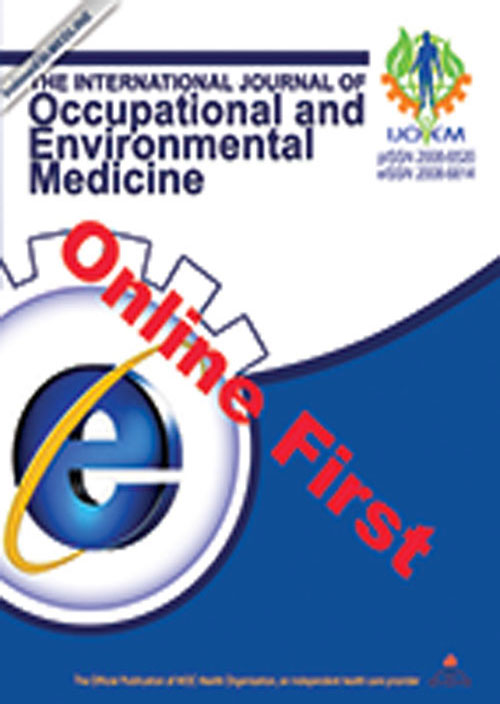فهرست مطالب
International Journal of Occupational and Environmental Medicine
Volume:2 Issue: 2, Apr 2011
- تاریخ انتشار: 1390/01/09
- تعداد عناوین: 8
-
-
Page 65Various cross-sectional and longitudinal studies have suggested that synthetic bedding is associated with asthma, allergic rhinitis and eczema while feather bedding seems to be protective. Synthetic bedding items have higher house dust mite allergen levels than feather bedding items. This is possibly the mechanism involved although fungal and bacterial proinflammatory compounds and volatile organic compounds may play a role. In this review we present and discuss the epidemiological evidence and suggest possible mechanisms. Primary intervention studies are required to show whether feather bedding is protective for the development of childhood asthma and allergic diseases while secondary intervention studies are required to potentially reduce symptoms and medication use in subjects with established disease.
-
Page 76Occupational asthma is defined as “a disease of variable airflow limitations and/or airway hyper-responsiveness due to causes and conditions attributable to a particular occupational environment and not stimuli that are being encountered outside the workplace.” An analysis of general population-based studies published up to 2007 showed that 17.6% of all adultonset asthma is due to workplace exposures. In this article, Different aspects of occupational asthma are briefly reviewed.
-
Page 82The incidence of brain neoplasm has been progressively increasing in recent years in the industrialized countries. One of the reasons for this increased incidence could be better access to health care and improved diagnosis in the industrialized countries. It also appears that Caucasians have a higher incidence than blacks or Hispanics or Asians. A number of risk factors have been identified and described including the genetic, ethnic and age-based factors. Certain occupational and environmental factors are also believed to influence the risk of primary adult brain tumors. Potential occupational and environmental factors include exposure to diagnostic and therapeutic radiations, electromagnetic radiation from cellular phones and other wireless devices, infectious agents, air pollution and residence near landfills and highvoltage power lines and jobs as firefighters, farmers, physician, chemists and jobs in industries such as petrochemical, power generation, synthetic rubber manufacturing, agricultural chemicals manufacturing. The purpose of this systematic review is to examine occupational and environmental risk factors of brain neoplasm. A range of occupational and environmental exposures are evaluated for significance of their relationship with adult primary brain tumors. On the basis of this review we suggest a concurrent evaluation of multiple risk factors both within and beyond occupational and environmental domains. The concurrent approach needs to consider better exposure assessment techniques, lifetime occupational exposures, genotypic and phenotypic characteristics and lifestyle and dietary habits. This approach needs to be interdisciplinary with contributions from neurologists, oncologists, epidemiologists and molecular biologists. Conclusive evidence that has eluded multitude of studies with single focus and single exposure needs to multifaceted and multidisciplinary.
-
Page 112Fifty-four drinking groundwater samples were collected in April 2010 from some districts of the Dakahlyia governorate, Egypt. The water samples were analyzed by atomic absorption spectrophotometer for iron, manganese, lead, nickel, chromium, zinc, copper, cobalt and cadmium concentrations. All samples but two were found suitable for drinking; from the water sample from Aga district showed slightly higher levels of cadmium and nickel (Ikhtab and Feshbena) than other areas; the concentrations were higher than the permissible limits of Egyptian Ministry of Health and World Health Organization.
-
Page 118Critical thinking is necessary to read the scientific literature. However, in addition to questions about the science, often one must also question the meaning of the text. This article provides an example of the analyses needed to understand a single sentence. In so doing, it raises several interesting issues of meaning, measurement, statistical analyses, and the form in which results are presented and interpreted.
-
Page 124
-
Page 126


